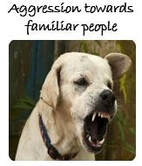Ever wonder why dogs hike their legs while peeing or kick grass after defacating?
By Katelyn Schutz, CPDT - www.wisconsinpetcare.com
(Really nice Blog feature)
By Katelyn Schutz, CPDT - www.wisconsinpetcare.com
(Really nice Blog feature)

Ever wonder why your male dog insists on hiking his leg on every tree, mailbox, and tall blade of grass on your walks? Curious why your pooch always seems to kick the grass in your face as you’re cleaning up her doodie?
Scent is the most important sense dogs have, so these behaviors are a form of territorial marking in the dog world. Wolves often urinate around their den, to create a perimeter surrounding their territory. This lets pack mates know they are on familiar territory, and conversely lets strangers know to back off and that this area is already “owned.” So when a dog urinates, it leaves a scent for other dogs and animals to detect. When your dog drags it’s feet in the grass and kicks feverishly after defecating, it is not only leaving a scent marker from it’s feet pads, but also a visual marker that says “I was HERE!”
Dogs mark vertical surfaces, like trees or wall corners, because the height allows the scent to carry farther in the air, and then the odor is right at snout level for others to sniff. In addition, height is a big status symbol in the dog world — the higher up you are, the more important or dominant you are. Marking a vertical surface is a way to establish this dominance. Plus, if your dog can mark higher than other dogs, his message is less likely to be obscured by others, and his urine marking is thus more effective. Male dogs have learned that hiking their leg allows them to aim their urine higher. My old man Boomer used to try to hike his leg so high, he would often loose his balance and fall over in his attempts. I’ve even seen some females do a hand-stand like move to compete! What’s amazing is that a dog can mark up to 80 times an hour, and will always have urine in reserve to mark that special spot as theirs.
In addition to providing a scent marking, urine provides a lot of information for other dogs. So when your dog sniffs that fire hydrant, it’s almost like she is catching up on the neighborhood’s newspaper or Facebook feed. The chemical composition of urine will change, dependent on many things, such as the emotional state of the dog, it’s age, gender, health, or sexual readiness. Like a calling card, dogs will be able to smell if the previous dog was afraid, or in heat, or even suffering from an illness.
Defecating works in a similar manner. When a dog passes stool, it emits a small amount of it’s anal glands, a very potent and specific scent to each dog. Does your dog seem to have a ritualized way of finding his spot before pooping, sniffing excessively and then dancing about the area before going? My dog Brogan does an incessant spinning that I affectionately call his “ballerina twirl” before finally relieving himself. It is believed this is also a way to create a special “landmark” for others. Or perhaps your dog kicks the ground with her hind legs after leaving a pile. This is an intentional communicational signal — it helps spread the stinky dung, it allows your dog to leave the scent of her sweat from the pads of her feet, and also creates another visual signal to others that she was, in fact, THERE.
So next time your dog hikes his leg, or spends a little too much time sniffing that light pole, don’t be embarrassed or disgusted. But rather look at it as a personal ad that your dog is leaving for all those that pass it! Next time your dog is taking too long to poop, don’t get upset, but understand that she’s just looking for the perfect spot to leave her message!
Scent is the most important sense dogs have, so these behaviors are a form of territorial marking in the dog world. Wolves often urinate around their den, to create a perimeter surrounding their territory. This lets pack mates know they are on familiar territory, and conversely lets strangers know to back off and that this area is already “owned.” So when a dog urinates, it leaves a scent for other dogs and animals to detect. When your dog drags it’s feet in the grass and kicks feverishly after defecating, it is not only leaving a scent marker from it’s feet pads, but also a visual marker that says “I was HERE!”
Dogs mark vertical surfaces, like trees or wall corners, because the height allows the scent to carry farther in the air, and then the odor is right at snout level for others to sniff. In addition, height is a big status symbol in the dog world — the higher up you are, the more important or dominant you are. Marking a vertical surface is a way to establish this dominance. Plus, if your dog can mark higher than other dogs, his message is less likely to be obscured by others, and his urine marking is thus more effective. Male dogs have learned that hiking their leg allows them to aim their urine higher. My old man Boomer used to try to hike his leg so high, he would often loose his balance and fall over in his attempts. I’ve even seen some females do a hand-stand like move to compete! What’s amazing is that a dog can mark up to 80 times an hour, and will always have urine in reserve to mark that special spot as theirs.
In addition to providing a scent marking, urine provides a lot of information for other dogs. So when your dog sniffs that fire hydrant, it’s almost like she is catching up on the neighborhood’s newspaper or Facebook feed. The chemical composition of urine will change, dependent on many things, such as the emotional state of the dog, it’s age, gender, health, or sexual readiness. Like a calling card, dogs will be able to smell if the previous dog was afraid, or in heat, or even suffering from an illness.
Defecating works in a similar manner. When a dog passes stool, it emits a small amount of it’s anal glands, a very potent and specific scent to each dog. Does your dog seem to have a ritualized way of finding his spot before pooping, sniffing excessively and then dancing about the area before going? My dog Brogan does an incessant spinning that I affectionately call his “ballerina twirl” before finally relieving himself. It is believed this is also a way to create a special “landmark” for others. Or perhaps your dog kicks the ground with her hind legs after leaving a pile. This is an intentional communicational signal — it helps spread the stinky dung, it allows your dog to leave the scent of her sweat from the pads of her feet, and also creates another visual signal to others that she was, in fact, THERE.
So next time your dog hikes his leg, or spends a little too much time sniffing that light pole, don’t be embarrassed or disgusted. But rather look at it as a personal ad that your dog is leaving for all those that pass it! Next time your dog is taking too long to poop, don’t get upset, but understand that she’s just looking for the perfect spot to leave her message!
|
Although none of us like to think about this aspect of our dogs, aggression in dogs is very real, and when this is targeted towards members of the family and people that are familiar to the dog, you are facing a very dangerous situation.
|
If you thought that all dogs were natural swimmers then think again! Some breeds are actually worse swimmers than others
|
What many people don't realize is the extent to which we, as pet guardians, can create stress in our dog. The veterinary publication dvm360 has compiled a list of stress triggers for dogs... and I think some of them may surprise you.
|





